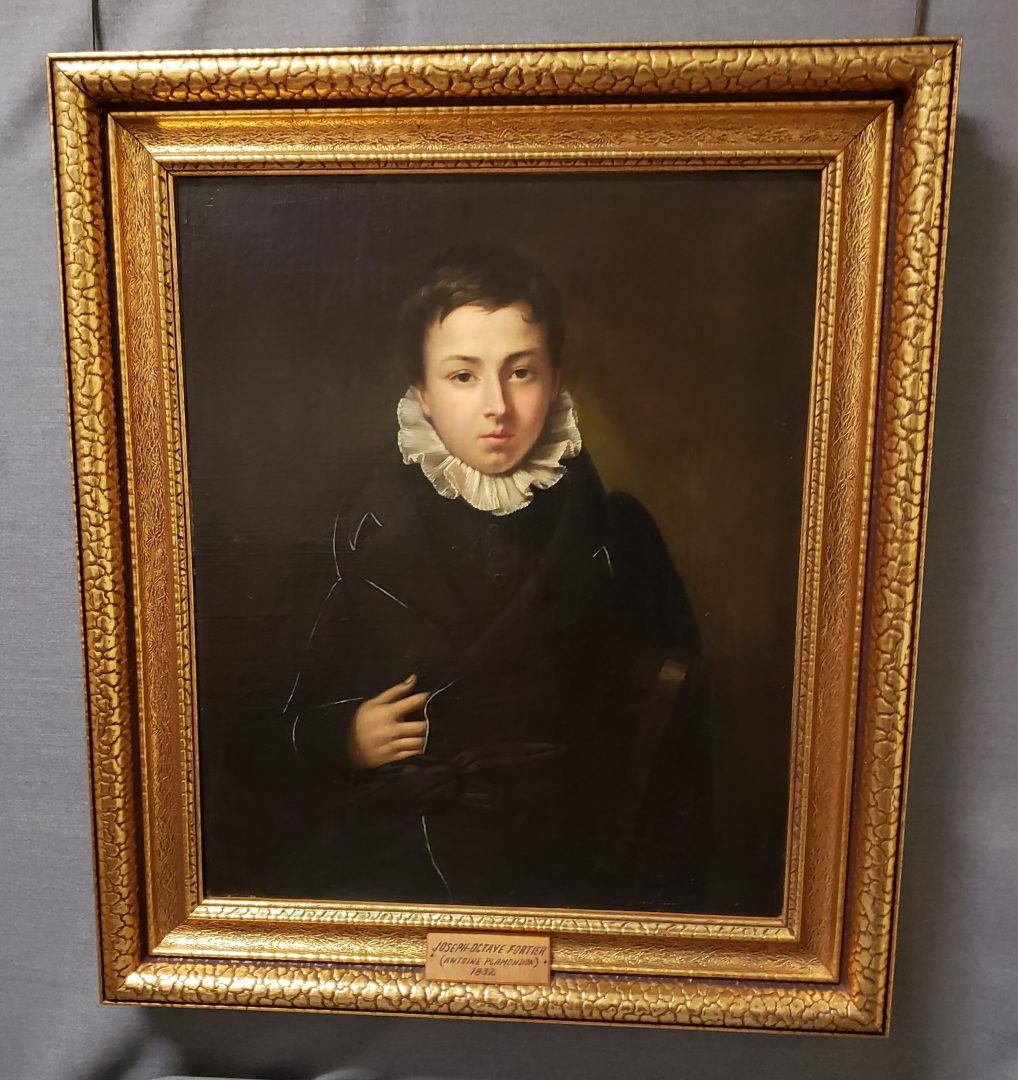Joseph Octave Fortier, born January 21, 1816, in Quebec City, was the son of Louis Fortier, a merchant, and Marie-Anne Contant. His parents enrolled him in the Séminaire de Québec, and he was a student there at the time this painting was created.
Mr. Gérard Morisset described this portrait in these terms in 1935 (Le Bien public, July 11th, page 9) : “… Viewed from the front, the left arm on the back of a chair, the left hand in the opening of the jacket. He looks as though he was getting tired of posing so long for the artist. His features are tense, his gaze dull, his expression that of a sick person. The white ruff that imprisons his neck accentuates this gruelling impression.”
Ordained as a priest in 1840, Joseph Octave Fortier became a vicar in Saint-Roch-de-Québec (1840-1842) and also served Grosse-Île (1841-1842), the place used to quarantine foreign immigrants from 1832 to 1937. Father Fortier contracted typhoid there and died in July 1842 at the age of 26.
With respect to the artist, Antoine Plamondon (1804-1895), he was the son of Pierre Plamondon, a farmer and later an innkeeper, and Marie Hamel. He benefited from the encouragement of the priest of his parish (L’Ancienne-Lorette), including for painting. Plamondon would go on to start an apprenticeship with painter Joseph Légaré in Quebec City in 1819; he stayed there for six years. In 1826, Plamondon left for Europe to study with artist Jean-Baptiste Guérin, dit Paulin-Guérin, the official painter of King Charles X. When Plamondon returned to the country in 1830, he alluded to his master in his advertisements.
Throughout his career, Plamondon mostly painted religiously inspired copies and portraits. He also gave lessons. His envious temperament meant that he did not hesitate to openly mock the works of his competitors. He eventually settled in Neuville, near Quebec City, where he bought land in 1842. Like others, around 1870-1880, he adopted the technique of using someone’s photograph as a basis for creating portraits. Furthermore, he used this technique for his self-portrait in 1882. He sold his workshop in 1885 and died unmarried in 1895.
Donation from Canon Louis-Arthur L.-Dusablon
Musée Pierre-Boucher Collection
1977 51 P
